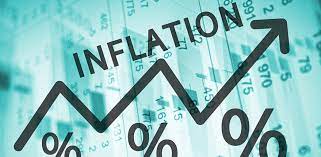The episode of surge in inflation in India is often driven by a sharp surge in non-core inflation.
The National Statistics Office (NSO) will release the June number for the Consumer Price Index (CPI), the size of the Indian benchmark retail inflation on Monday. Reuters forecasts from economists estimate that the CPI grew by 6.58% in the year in June. If it is true, this will be the highest inflation rate since the November 2020 value of 6.9%. It will also make June the second month in a row when retail inflation will be higher than the upper limit of Indian tolerance bank reserves of 6%. Here are five graphics that can help understand the latest inflation numbers.
1. What happens to core and non-core inflation?
Fuel prices have dominated discussions around prices in the past, and for good reasons. The price of gasoline passes ₹ 100 / liter in the fourth metropolitan city on July 7. However, the main inflation number shows more than just fuel prices. In fact, the fuel and light categories have a weight of only 6.84% in the CPI basket. Given the fact that food prices and fuel tend to have greater volatility, economists often apply the difference from what is called core inflation and non-core while looking at prices. Core inflation refers to non-fuel non-fubling components from the inflation basket. The weight of each core category and non-core in the Indian CPI basket is 54.1% and 45.9%. The episode of surge in inflation in India is often driven by a sharp surge in non-core inflation. Core and non-core inflation increased in May 2021 compared to the April 2021 level. Core inflation in May was at 6.5% and non-core components were 6%. While non-core inflation leaps are expected to remember the increase in fuel prices, increasing core inflation will underline broad-based inflationary pressures in the economy.
2. Other oils that drive Indian food inflation
What was extraordinary about the May inflation rate was a sharp surge in food inflation, which increased from 2% in April 2021 to 5% in May. Keep in mind that these numbers come on a high basis. Food inflation was 9.2% in May 2020. However, what had changed between May 2020 and May 2021 was the factors that drive food inflation. Cultural contributions, milk and products and vegetables, the three most important sub-components of the CPI food basket, have dropped in May 2021 compared to May 2020. But the role of vegetable oil in triggering food inflation increased significantly. Because India is a net importer of marriage oil, and internationally edible oil prices are at the highest point of all time, every relief is not possible at the front. To be sure, international inflation for edible oil seems to have peaked in May 2021. However, heavy rain in parts of the country during June can increase the surge in vegetable prices, produce additional food tailings for food inflation.
3. Inflation services can increase because the economy opens and demands increasing
Other categories of CPI have a weight of 28.3% in the CPI basket. These most include service prices and include sub-categories of household goods and services, health, transportation and communication, recreation and entertainment, education, stationery, etc., and personal care and impact. Inflation for other categories grew at 7.5% in May 2021, the highest value since March 2013. When the economy opens and demands taking these categories, there may be additional inflationary pressure forward.
4. The role of global commodity prices
Retail inflation also depends on what happens at the producer price, which is captured in a better way by the wholesale price index (WPI). WPI will be released this weekend. It crossed a 10% sign in May 2021 to 12.94%.
Sharp spikes in WPI are also the result of increasing commodity prices in the international market because demand increases with the revival of growth in developed countries. However, see Bloomberg Commodity Index (BCK) shows that international prices peaked in June. BCUR, which is a weighted energy index, grain, industrial metal, precious metal, livestock and sugar, coffee and cotton prices, reached a value of 95.02 on June 10, 2021, the highest since July 23, 2015. It was valued at 93.06 on July 9 The question is whether the price will remain at the current level, which is quite high compared to historical standards, or down further. Completeness or reversal in a downward trend in the past week can produce additional headwinds on domestic inflation numbers.
Completeness or reversal in a downward trend in the past week can produce additional headwinds on domestic inflation numbers. (Hindustan time)
“Closer scenery reveals a faster increase in the momentum of CPI inflation (May) compared to WPI inflation, the possibility of being led by more pass-through higher input costs, higher oil prices and logistical disorders due to locking. When locking it. , this disorder is likely to subside, encouraging CPI inflation back below 6% (in July / August). That is the possibility of the story of 1hfy22 “, a research note by Pranjul Bhandari and Aayushi Chaudhary at HSBC Capital Markets and Research. However, the record warns that the reverse risk of inflation can reappear in the second half of the fiscal year, the possibility of being driven by two factors: Corporate tends to feel more confident about passing higher prices to consumers due to commercial pressure and demand side pressure triggering inflation services.




